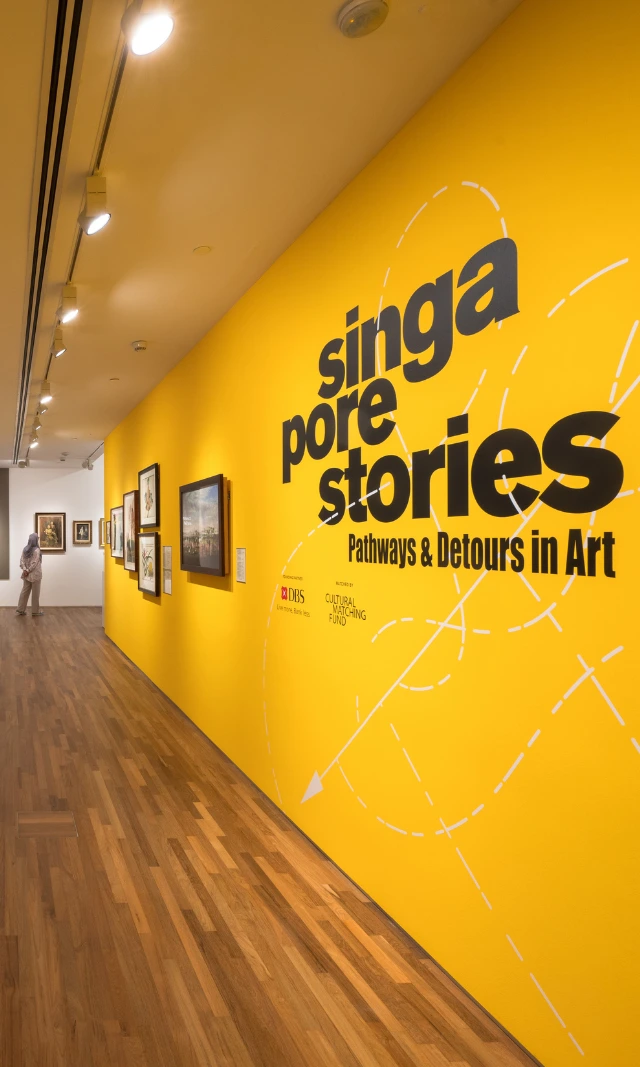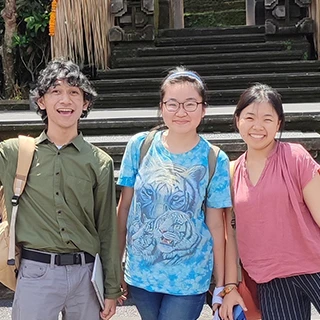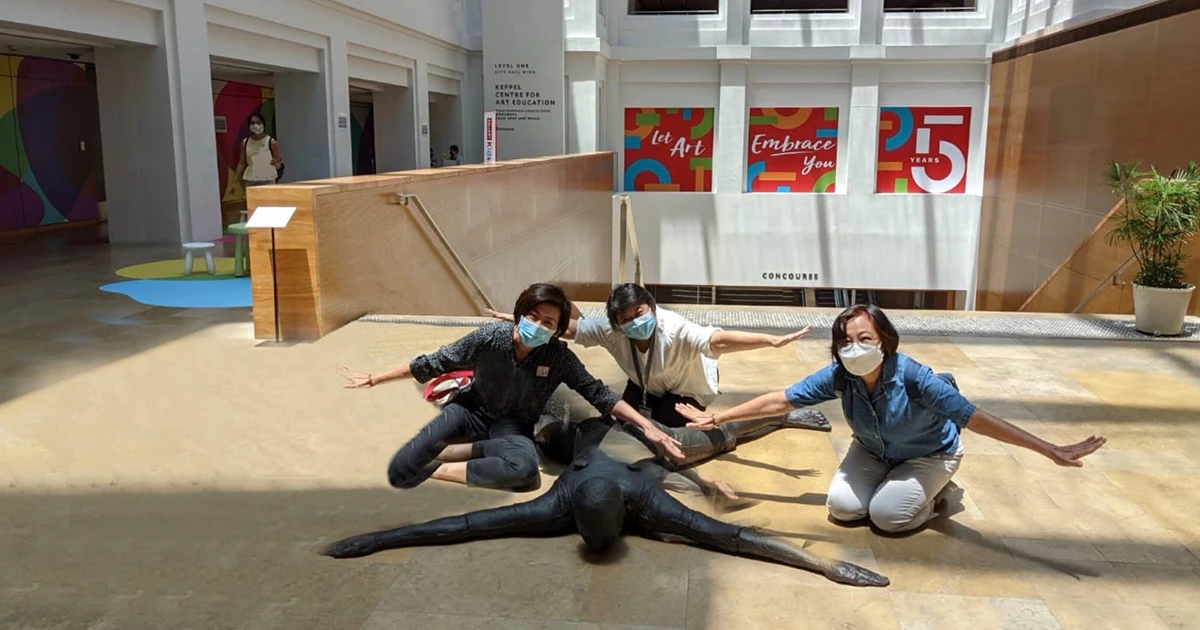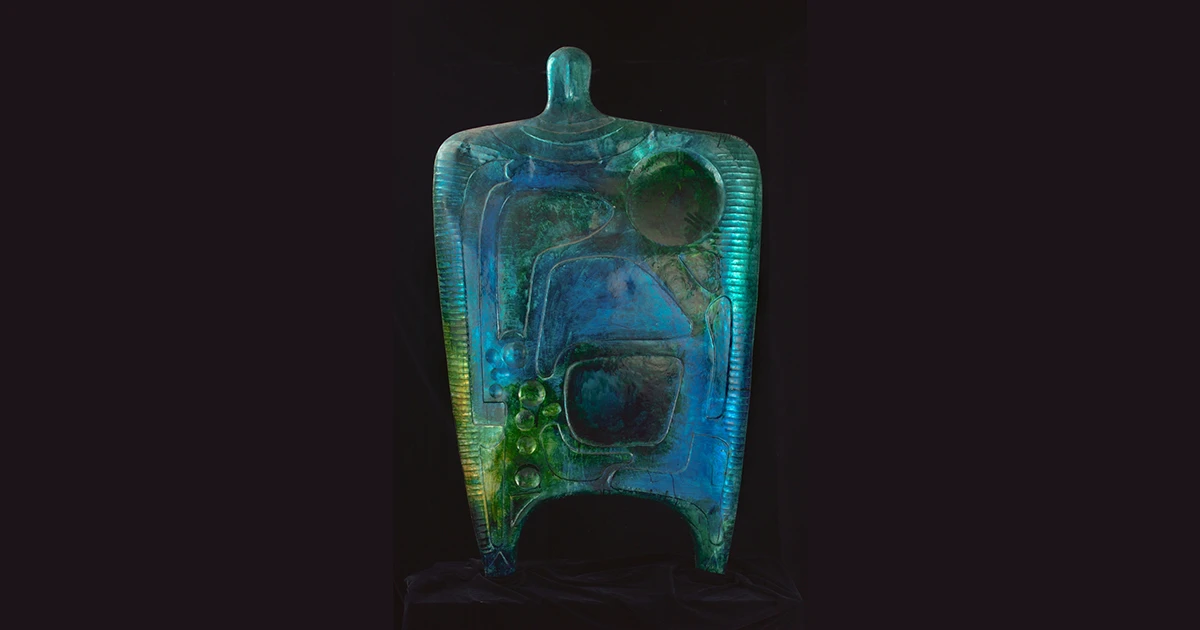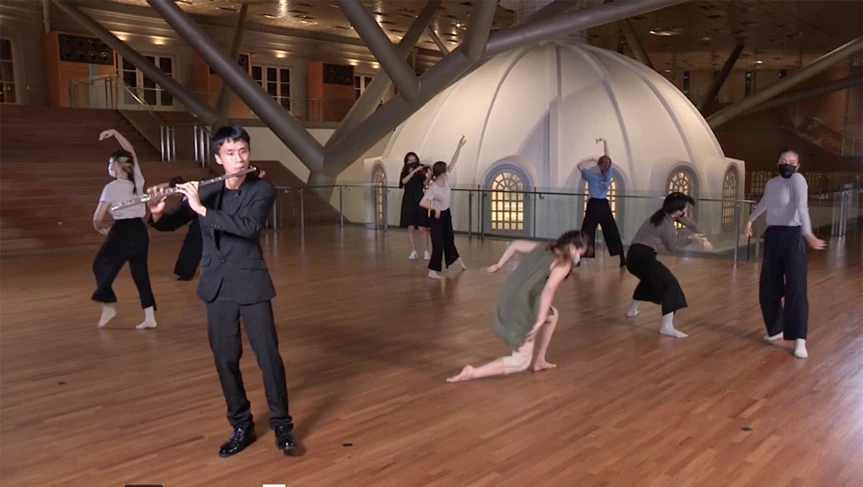Reflections from the Field: Southeast Asian Futurism in Art and Design
Three participants from 2023's External Assessment Summer School share about how the programmes, which took place across the Indonesian cities of Bali, Majalengka and Bandung, showcased how art and design can bring communities together to imagine, embody and create sustainable futures.

Earlier this year from 13 to 20 August, we participated in the workshop Southeast Asian Futurism in Art and Design, organised by the External Assessment Summer School and supported by the ASEAN Foundation.^ Taking reference from the works of Sutan Takdir Alisjahbana (1908‒1994, Indonesia), the workshop aimed to explore ideas and strategies to deal with present and future social, ecological, and cultural issues in Southeast Asia through unfolding the potentialities of art and design. Delegates from various ASEAN countries with various backgrounds in the arts and cultural diplomacy attended this week-long workshop. Participating in the workshop allowed us to gain fresh and diverse perspectives in addressing issues both in and outside of our respective countries. Over the course of a week, participants visited three cities in Indonesia—Bali, Majalengka and Bandung—with each city offering different insights into specific artistic and cultural initiatives, as well as methods of design thinking that foreground the importance of ecological awareness.
The workshop began in Bali, where we visited the Museum Puri Lukisan in Ubud. We were introduced to the works and practices of peasant painters from the village of Penestanan. We also learned about the role of Datuk Lim Chong Keat, an architect who had a significant impact on architectural design in the region, and who introduced the painters from Penestanan to a regional audience in Singapore. The story highlights the necessity of initiators in driving the progress of a region.
We continued our workshop in Bali by visiting the community space Halaman Kita, where we were introduced to the environmental initiatives of the Malu Dong Community and Marmar Herayukti, and the modular design project of Kadasa Architects. From the presentation by the Maludong Community, we recognized that waste management is a collective responsibility regardless of background. Marmar Herayukti, an artist who makes ogoh-ogoh sculptures from environmentally-friendly materials, emphasised that artists must consider the materials they use in their creations. Marmar also stressed the importance of offering concrete solutions when advocating for a more ecologically conscious approach to art-making. Kadasa Architects is made up of a group of young architects who are exploring the option of modular living, and how design can respond to issues of environmental degradation and the limitations of natural and human resources.
In Majalengka, we had the opportunity to learn from the Jatiwangi Art Factory (JAF) and how they work with the local community to develop art and cultural initiatives. Clay from Majalengka is renowned, and JAF has harnessed this potential effectively by drawing on city’s history of roof tile production. Today, JAF has evolved into an “Art Factory” producing a variety of clay-based items, including decorative wall pieces and musical instruments, establishing clay as a visual identity emblematic of the local area. JAF also holds multiple community events exploring the history and characteristics of the clay roof industry while working to resolve issues caused by new industries, such as textile factories. Through our interaction with JAF and local communities, it became clear that extractive capitalist industry continues to pose threats to the lives of the local community.
Our experience in Majalengka highlights the importance of developing a strong visual identity to bring attention to a region's cultural significance and empower communities. The initial step in formulating a visual identity is identifying local artists and artisans who can blend the available resources and mediums unique to the region. Even if there are no artists using local resources, modern elements can still be combined with local materials. By understanding local artistic resources and skills, a visual identity that embodies the region's character can be established.
We concluded the workshop with a two-day sessions at the Design Center ITB (Institut Teknologi Bandung – Bandung Institute of Technology), which is well known for its science and technology programmes. When we were students ITB, we were trained to solve everyday problems through innovation. This emphasis on the academic contrasts with the emphasis on initiatives in Bali and practical actions in Jatiwangi. For this year’s Summer School, we participated in a design thinking workshop with ITB's Design Ethnolab where we walked around campus and observed how communities in a local market and hawkers dealt with everyday infrastructural challenges. We also observed how they developed small innovative solutions to respond to their everyday problems. While we learned from our time at ITB that institutions and universities can contribute to top-down policy making, this two-day session demonstrated that institutions can also work with communities at the grassroots level to develop methods and innovations that respond to issues and problems surrounding infrastructure and environmental degradation.
From this week-long Summer School, we learned how art and design play a significant role in developing forward thinking, and formulating futures in Southeast Asia. The key tenor of the collective initiatives that we encountered throughout the programme is a reminder of how local communities relate to their environment. We believe that we can move forward by reimagining the future through this lens. We have to ask ourselves: When rapid economic development can no longer sustain our present conditions, how can we collectively build for a sustainable future? Perhaps, we can create a future through art and design that expresses human responsibility, solidarity and creativity.
Editor’s Note
The programme was conceived by National Gallery Singapore curators Kathleen Ditzig and Anissa Rahadiningtyas as part of their ongoing curatorial research into Southeast Asian Futurisms in partnership with NUSA CMYK, Jatiwangi Art Factory and ITB.








